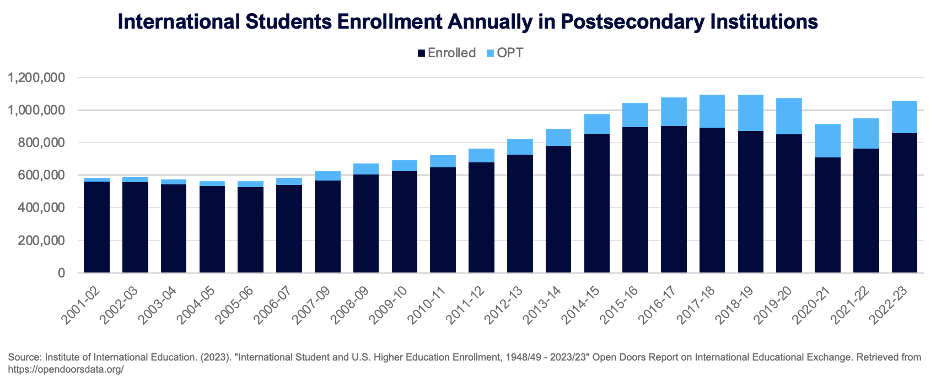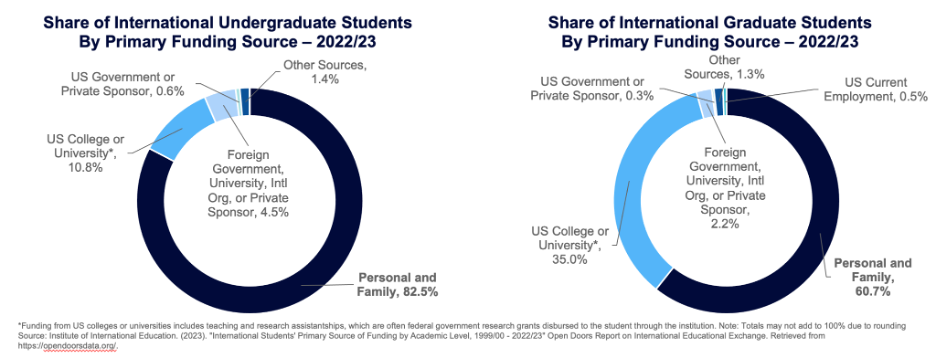International student enrollment in US institutions is rebounding after significant declines during the pandemic. Data from the Institute of International Education (IIE) shows that over one million international students enrolled in US institutions in 2022-23. These students accounted for almost six percent of total enrollment, including Optional Practical Training (OPT) students.

US Benefits from New International Policy Shifts
This could be a pivotal moment for higher education in the US. Throughout the 2000s, even as the number of international students attending US universities grew, the US lost overall share of incoming foreign students to other members of the “Big Four” English-speaking destination countries – the United Kingdom, Canada, and Australia. But recent more restrictive policies in these countries may impact their growth going forward. Additionally, a survey of global student satisfaction showed that the US has the highest rating of the Big Four as of October 2023.
International Students Benefit Institutions
International students are an essential part of US higher education institutions for a multitude of reasons. They bring academic and cultural diversity, contribute to research and innovation, and more pragmatically speaking, provide much-needed enrollment and revenue.
According to the IIE, almost 83 percent of international undergraduates, and 61 percent of international graduate students, fund their US education primarily through family or personal income. The net revenue realized for an institution can be much higher than for domestic students.

International Students Benefit the US Economy
In November 2023, the Association of International Educators (NAFSA) released their International Student Economic Value Tool (ISEVT), which reported that over one million international students studying at US colleges and universities contributed over $40 billion to the US economy in the 2022-23 academic year. According to NAFSA’s data, these international students supported 368,333 jobs in 2022-23, an almost 10 percent rise from the previous year.
In addition to the tuition the students paid to US higher education institutions, they also contributed significantly to spending on goods, services, accommodations, transportation, and food. International student spending, with its attendant economic benefits and job creation, was highest in larger states like California, New York, and Texas, but smaller states, like Rhode Island and Alabama, also boasted significant payoffs.
The NAFSA report coincided with an announcement of the formation of the US for Success Coalition, which “seeks to position the United States to effectively compete and cooperate on a global stage by attracting top talent and ensuring the success of all international students.” A separate issue brief from NAFSA said, “Consider a 2022 study by the National Foundation for American Policy that found that one quarter of all US unicorns—start-ups valued at $1 billion or more—were founded by individuals who first came to the US as international students.”
How Will Higher Education Proceed?
As institutions consider how to attract more international students, they need to understand the programs these students want and where they can find them. Stay tuned for our next two blogs, where we’ll take a much closer look using Gray DI’s International Student Demand dashboard. We’ll take a very detailed approach in order to investigate recent demand trends, including notable changes in student country of origin, as well as more granular details on STEM program demand, completions, and much more.




